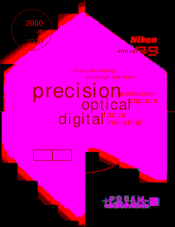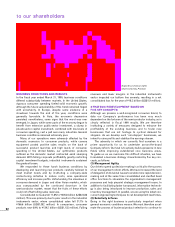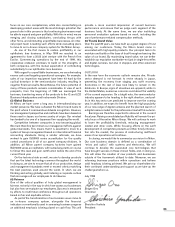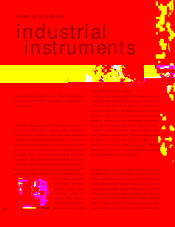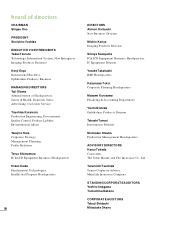Nikon 1999 Annual Report Download - page 4
Download and view the complete annual report
Please find page 4 of the 1999 Nikon annual report below. You can navigate through the pages in the report by either clicking on the pages listed below, or by using the keyword search tool below to find specific information within the annual report.
BUSINESS CONDITIONS AND RESULTS
In the fiscal year ended March 31, 1999, business conditions
differed substantially between markets. In the United States,
vigorous consumer spending fueled solid economic growth,
although the future sustainability of this trend remained tinged
with uncertainty. In Europe, despite some evidence of a
slowdown towards the end of the year, conditions were
generally favorable. In Asia, the economic depression
persisted; nevertheless, some signs that the worst was over
emerged. In Japan, while some parts of the economy began to
benefit from extensive public-sector investment, a slump in
private-sector capital investment, combined with low levels of
consumer spending, cast a pall over many industries. General
business conditions remained extremely poor.
Many of our operations were adversely affected by the
domestic recession. In consumer products, while camera
equipment posted positive sales results on the back of
successful product launches and high levels of consumer
spending in the United States, our ophthalmic products
suffered as the domestic market contracted amid slumping
demand. With falling corporate profitability greatly restricting
capital investment budgets, industrial instruments sustained
the greatest losses.
We responded to these harsh business conditions by
developing and launching new products carefully tailored to
meet market needs and by instituting a company-wide
restructuring initiative to reduce costs, raise operational
efficiency and increase profits. Unfortunately, the slowdown in
consumer demand in Japan and other Asian markets, which
was compounded by the continued downturn in the
semiconductor market, meant that the fruits of these efforts
could not offset falling sales revenues.
Consolidated net sales fell 17.8% to ¥305.8 billion (US$2,536
million). This was primarily due to poor results in the industrial
instruments sector, where consolidated sales fell 31.1% to
¥166.6 billion (US$1,382 million). In comparison, consumer
products rose 6.9% to ¥139.2 billion (US$1,155 million). Falling
revenues and lower margins in the industrial instruments
sector impacted our bottom line severely, resulting in a net
consolidated loss for the year of ¥18.2 billion (US$151 million).
STRATEGIC REDEVELOPMENT BASED ON
FIVE KEY CONCEPTS
Although we possess a well-recognized consumer brand, to
date our Company's performance has been very much
dependent on the fortunes of the semiconductor industry, as is
clearly reflected in fiscal 1999 results. We are therefore
instituting a variety of measures designed to enhance the
profitability of the existing business and to foster new
businesses that are not hostage to cyclical demand for
steppers. As we develop such ‘non-stepper’ businesses, we
intend to raise profits and stabilize the earnings stream.
The adversity in which we currently find ourselves is a
prime opportunity for us to undertake across-the-board
Company reform. Our task is to actively build a presence in new
fields while improving established core business areas.
To guide us as we overcome this difficult situation, we have
formulated a business strategy characterized by five key con-
cepts, as follows:
(1) Management Agility
Our drive to speed up decision-making is critical to the success
of our management reform efforts. We have increased the level
of delegation of divisional issues to enable more rapid decision-
making and at the same time consolidated and clarified head
office functions to streamline the organization's management
processes and help pinpoint strategic management issues. In
addition to facilitating faster turnaround, information technolo-
gy is also being introduced to improve production, sales and
inventory management. In parallel, we are using the latest con-
current engineering techniques to cut development lead times.
(2) Selectivity & Focus
Being in the right business is particularly important when
general economic conditions worsen. We must therefore accel-
erate the process of business/product selection to continue to
02
to our shareholders
Shigeo Ono, Chairman (right)
Shoichiro Yoshida, President
QX 33.nikon first 00.5.18 4:10 PM ページ 5

